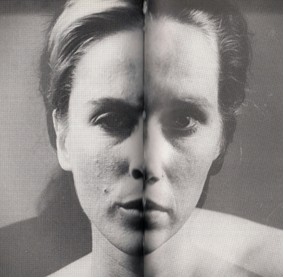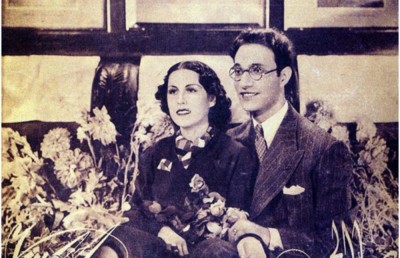Perseus vs. Medusa = Defensive Masquerade
_1000_420_90_c1.jpg)
“The hero Perseus beheaded Medusa
and used her head as a weapon.”
(ancient Greek Mythology)
“Just because men have exploited and colonized the female body …doesn’t mean that we cannot put on our own versions.”
(Holly Hughes from “Out from Under: Texts by Women Performance Artists” 1990: 6)
Keywords: film, psychoanalysis, myth, Gorgon Medusa, castrated woman, Perseus, Phorcys film director, omnipotence, patriarchal society, pallocentrism, erotic spectacle, scopophilia, narcissism, instinct, ego libido, voyeurism, fetishism, sadism, pleasurable transgression, male/female gaze, binary opposition, proximity and distance, transvestism, masquerade.

1. Introduction.
This essay takes its inspiration from the texts of two prominent feminist film theorists: Laura Mulvey’s “Visual Pleasure and Narrative Cinema” (written 1973, org. publ. 1975) and Mary Ann Doane’s “Film and Masquerade, Theorizing the Female Spectator” (org. publ. 1982), with the aim of discussing (and theorizing) the use of female imagery by the film director in a male dominated society.
Feminist film theory uses “psychoanalytic theory […] as a political weapon, demonstrating the way the unconscious of patriarchal society has structured the film form” (Mulvey 1989:14). Alongside such traditional psychoanalytical models, the essay will examine the imagery of the Gorgon Medusa, since a large number of feminists rapidly adopted the image of the Gorgon Medusa as a symbol of their own rage (Wilk 2000: 217–218). Freud’s text on the subject, “Medusa’s Head” (written 1922-1923, org. publ. 1940), can be seen as a bridge between psychoanalysis and the feminist symbol. A careful study of the text reveals that Freud’s interpretation of the ancient myth is partial, concentrating on the comparison between the image of Medusa’s Head and the terrifying genitals of the mother. Freud does not mention anything about the heroic deed of Perseus, about Medusa’s death, or the fact that Medusa’s head was first used by Perseus as a protective weapon, before he presented it to Athena (Perseus used Medusa’s head to protect himself and his loved ones from male rivals.) Most importantly, he used Medusa’s head to protect his mother Danaë from king Polydectes, who wanted to marry her against her will.
2. Connection between the image of women in the cinema and the symbol of the Gorgon Medusa
Laura Mulvey (1989:14) postulates that within a phallocentric society, the woman’s lack of a phallus gives meaning to the man’s possession of it, along with the power and status it brings. “Woman” exists only in relation to castration and cannot transcend it. This process is both displayed and reinforced in the cinema. According to Mulvey, “the presence of woman is an indispensible element of spectacle in normal narrative film, yet her visual presence tends to work against the development of a story line, to freeze the flow of action in moments of erotic contemplation” (Mulvey 1989:19). Based on that, we can make a link between the objectified cinematic woman’s image and the Gorgon Medusa from the ancient Greek mythology (Modern American Poetry). Freud asserts that, “The sight of the Medusa’s head makes the spectator stiff with terror, turn him to stone […] For becoming stiff means an erection. Thus in the original situation it offers consolation to the spectator: he is still in possession of a penis, and stiffening reassures him of the fact” (Freud 1940: 2 (85)). If we accept Freud’s interpretation, then it is easy to see how the erotic is embedded in our stories and imagery (including film). As Mulvey states, “unchallenged, mainstream film coded the erotic into the language of the dominant patriarchal order” (Mulvey 1989:16). Applying the psychoanalytical insight of the patriarchal construction of film form, the woman’s image in cinema can be likened to the image of Medusa, while the film director attains the double role of both Medusa’s Father/Creator (Phorcys) and Medusa’s killer (the hero Perseus).
According to the ancient myth, Perseus beheaded Medusa by looking at her image in his mirrored shield, and then used her head as a defensive weapon (Modern American Poetry). The head of the Medusa is feminine and can be viewed as a mask, a defensive mask. Mary Ann Doane states (referencing Joan Riviere) that in the phallocentric society, the spectator of film undergoes a “masculinization”. This, in turn, affects the sexual development of the intellectual woman and forces her to wear femininity (womanliness) as a defensive mask to hide her obtained masculinity, namely Transvestism (Doane, 1982). Therefore, we are presented with a situation where the feminine defensive mask (the visual presence of a woman on the screen) in the hand of Perseus (the film director) is confronted by its counterpart –the feminine defensive mask in the hand of an intellectual woman. This confrontation brings us to a discovery of the double role of the womanliness as a powerful defensive weapon (masquerade) in the phallocentric society, that is used confrontationally by both men and women. The woman-spectator uses femininity as a defensive masquerade to conceal her masculinity, while the male film director holds the female defensive mask in front of him to protect himself (his masculinity, to protect the unconscious film form of the phallocentric society).
In the process of film production, the film director attains two opposite roles: the role of Medusa’s father/creator – Phorcys (the sea monster god) and the role of Perseus (Medusa’s killer); therefore, the director appears as a double-faced Janus (a monster and a hero at the same time). Both roles are active. Going further, we can reference Freud’s statement, that “a boy, who has hitherto been unwilling to believe the threat of castration, catches sight of the female genitals, probably those of an adult, surrounded by hair, and essentially those of his mother […] – the hair upon Medusa’s head” (Freud 1940: 1(84)). Therefore we can state that the male film director (Phorcys/Perseus) creates, then decapitates, his mother’s image on the film screen, and then uses it as a defensive weapon to protect himself and his mother. This fact creates a paradox, so to speak, the “closed circle”. Referencing Freud, Medusa is presented as the supreme talisman, who provides the image of castration –associated in the child’s mind with the discovery of maternal sexuality– and its denial (Freud, 1940). By beheading Medusa, Perseus takes/ receives into his possession the absolute power of the Image of Castration, which he applies then against others.
When a female appears in the role of a film director in the phallocentric male dominated film industry, she too is left with no choice but to wear the double-faced mask of Phorcys/Perseus concealing her “castration” (threat) and “non-identity” (Mulvey, 1989, pp. 14-26). This contributes to the continuation of the confrontational masquerade not only on the outer social level, but also on the inner psychological level.
3. Anatomy of the Defensive Masquerade “Perseus vs. Medusa”
The defensive masquerade of using the feminine mask by both parties (the male director and the female spectator) has its own distinct structure and anatomy. Let us call this masquerade “Perseus vs. Medusa” and see what it consists of.
3.1 Medusa’s Creation
First and foremost, Medusa’s image needs to be created, in order to then be beheaded and converted into the hero’s defensive weapon of protection (Modern American Poetry). The film director is responsible for Medusa’s creation (of the woman’s image in film). For that purpose, he needs to attain the role of the monster sea-god father, Phorcys. He needs to give birth to Medusa, to create the cinematic image of woman on the screen according to the needs and demands of the phallocentric society (sometimes the actresses herself offer to direct her already “ready-made look”). His task is to satisfy the erotic needs of the audience and with this to manipulate the perception of the spectator. However, his “super-task” is to sustain the major beliefs of the patriarchal society, strictly defining the place of the male and female within it, playing on their sexual differences (one, who has a penis – superior; another, who has no penis – inferior and her desire to get it projects the threat of castration (Mulvey 1989: 14-26).
Objectification of a woman and creation of her erotic “to-be-looked-at-ness” (Mulvey 1989:19) started at the beginning of the film era, until women gradually earned and were given more physical and intellectual power (ironically, prior to the studio system being fully developed, women had more active production roles within the film industry). Nevertheless, the dominant role of the hero in the narrative structure of film is clearly portrayed by masculine, not feminine characters (example: the independent female characters in Avatar, such as Grace and Trudy Chacón, are killed, being removed from the male dominated sci-fi world.) This makes a clear reference to the fact that “if any daring member of one of the current women’s liberation movements stepped out into the men’s world of future, she’d probably be shot on sight” (King 1984: xii-xvi).
It is important to state that the contemporary cinematic woman’s image has undergone some refinement. Today we are seeing all kinds of possible variations of “attractive” female presentations: anima-like and glamorous femmes fatales, intellectual women in their not-concealed state of transvestism (which according to Doane “is only another occasion for desire” (Doane 1990: 49)), and women in the “masquerade state,” where the woman opens and conceals her masculinity whenever she feels it necessary (For example, in Avatar, the female character Trudy Chacón (Michelle Rodriguez), is a pilot and an independent woman, who is shown mostly in a military outfit (state of transvestism), suddenly shows off her big breast line in a white t-shirt to attract the attention of the male guard (femme fatale in excessive masquerade) in order to get into the prison to release her friends. Nevertheless, with all the visible changes that occurred, the main rule of the industry stays the same –the director needs to hyperbolize and glamorize the woman’s image (in one way or another make it distinct) in order to construct a suitable object of desire. It is this desire to look, which gives the visual pleasure and erotic satisfaction.
3.2 Medusa’s Decapitation
“In psychoanalytic terms, the female figure poses a deeper problem. She also connotes something that the look continually circles around but disavows: her lack of a penis, implying a threat of castration and hence unpleasure” (Mulvey 1989: 21). Mulvey stated that “the male unconscious has two avenues of escape from this castration anxiety: voyeurism/sadism –preoccupation with the re-enactment of the original trauma (investigating the woman, demystifying her mystery), counterbalanced by the devaluation, punishment or saving of the guilty object […] or else complete disavowal of castration by the substitution of a fetish object or turning the represented figure itself into a fetish […] so that it becomes reassuring rather than dangerous. The second avenue, fetishistic scopophilia, builds up the physical beauty of the object, transforming it into something satisfying in itself” (Mulvey 1989: 22). All these themes can be observed in the plots of several famous directors’ works. Ingmar Bergman (Bergman, 1994) investigated his women, demystifying them by assigning them the status of characters with deep psychological and mental problems and with this diagnosis, punishing them (following the patriarchal world view). Most film directors can be divided into two categories: those who punish the female figures (Medusas) using the cinematic language, and those who save the female figures (Mothers).
In order to fulfill their mission of punishment or salvation, film directors need to turn from Phorcys and into Perseus (enjoying the omnipotence of the Creator – Hero transition state). Once the director is Perseus, he/she needs to turn himself to the “sadistic side fits in well with narrative. Sadism demands a story, deepens on making something happen, forcing a change in another person, a battle of will and strength, victory/defeat…” (Mulvey 1989: 22). At this point we need to keep in mind that Perseus killed Medusa by looking at her reflection in his mirrored shield. We can interpret the shield to be the film screen, taking into consideration Mulvey’s statement about “similarities between screen and mirror” (Mulvey 1975: 17). Therefore, we can logically conclude that a woman’s cinematic image that is presented on screen isn’t in fact dangerous. We all know that the power of Medusa’s head is active only within the diegesis, in the three-dimensional space of the story line, “where the hero commands the action” (Mulvey 1975: 23). Following this, we can resolve that the Medusa’s decapitation (assassination) happened in the moment when the film is released and projected on the screen or happened “behind the screen” in the unconscious of the film director.
3.3 Medusa’s Head as a protective weapon against the male spectator
“He cut off her head […] The head still retained the same petrifying power as before (Modern American Poetry).

Pict 1. “She shifts her glance from her partner straight.” Harriet Andersson, in Through a Glass Darkly, 1960

Pict. 2 Bibi Andersson & Liv Ullmann into the lens in Persona, 1965
Mulvey states that the fragmented female body “integrates into the narrative a different mode of eroticism. One part of a fragmented body destroys the Renaissance space, the illusion of depth demanded by the narrative, it gives flatness, the quality of a cut-out or icon rather than verisimilitude to the screen” (Mulvey 1989; 20). Looking at the Bergman’s female “Trophy Heads” (Pict. 1, 2) we can find in their representation some similarity to a flat photographic image, resembling the dead mask of Medusa’s Head (referencing the mummification of photographic image, described by André Bazin in his text on the “Ontology of the Photographic Image” (Bazin 1974: 9-16)).
After the moment Medusa was beheaded, “the myth of Perseus takes on a new psychological meaning” (Modern American Poetry). It tells us of the exploit of the hero, who conquered “castrating” a woman and armed himself with powers he acquired in her destruction ” (Modern American Poetry).

Pict. 3 Perseus and Medusa. 1545-54, Loggia dei Lanzi, by Benvenuto Cellini
The Film Director (Perseus) holds the woman’s cinematic image (Medusa’s Head) in front of him, hiding behind it (hiding behind the film screen) (Pict. 3). The act of head in hand shows to others that he is the hero (Perseus rendered his name immortal by his conquest of Medusa, (Modern American Poetry)). He is the one who killed the monster, and the one who now possesses a double strength (male and female power). Taking into consideration that we live in a society where “under capitalism power and money have become commensurable qualities” (Benjamin, 1978: 114), it is of no surprise that being a film director is a desired profession (adding to this the fact of the hero’s immortality). Therefore, a lot of young people nowadays, in the era of accessible filmmaking equipment, dream of becoming a film director. The success of the established mainstream film director, among other factors, depends on how good he/she is in the roles of Phorcys and Perseus and how powerful are his Medusa’s Heads; in other words, how good he is at fetish object construction and how sadistic he is in forcing a change in it.
“The sight of Medusa’s head makes the spectator stiff with terror, turns him to stone” (Freud 1940: 2 (85)). Here Freud compares stiffening with the erection. The film director, with the possession of the Medusa’s Head, possesses the ultimate power over the male spectators, regulating and programming their moments of erotic contemplations; putting them into a dependent position. The film director controls the erotic fantasies of the male spectator.
However, if we consequently follow our comparison between the film screen and Perseus’s shield (mirror), we can state that, similar to Perseus, the audience is looking not at the actual Medusa’s Head, but at its reflection. Therefore her sight cannot be harmful for the spectator. Nevertheless, due to the fact that “the cinema unreels in an imaginary space which demands participation and identification” (Bazin 1971: 174) the spectator in the dark room begins to identify himself with the male hero. The male spectator forgets about the screen. He goes “through” it, and by identifying himself with the hero, faces the actual Medusa’s Head, experiencing the moments of erotic contemplations. That is how André Bazin describes his experience as a male film viewer: “The actor winning the woman gratifies me by proxy. His seductiveness, his good looks, his daring do not compete with my desires – they fulfill them” (Bazin 1971: 174). The film director can never obtain the role of the male spectator in the full scale, since he always remembers the process of working behind the screen (killing Medusa); he holds Medusa’s head and keeps a distance (Pict. 3), remembering to protect himself and killing his rivals. Here we can reference Bazin, who confirms that “death is the negative equivalent of sexual pleasure, which is sometimes called, not without a reason, “the little death” (Bazin 1971: 173). The identification with the hero in the narrative space is, at the end, harmful for the spectator.
3.4 Medusa’s Mask vs. Female Spectator
In order to understand the relationship between the Medusa’s Head and the female spectator we need to reference Freud: “the woman is constructed differently in relation to processes of looking […] the woman has a problematic relation to the visible, to form, to structures of seeing” (Doane 1990: 47). The woman is lacking the distance between seeing an image and at the same time understanding it (Doane 1990: 47). According to Doane “the body which is so close continually reminds her of the castration (which she wants to get rid of by obtaining the penis – the symbol of power). Here we can argue, that if female spectator saw the Medusa’s Head up close (the close up of the woman’s image on the screen Pict. 1, 2) she is unconsciously considering the power it possesses. This power is coded in the enlargement of the physical proportions on the screen image. Therefore, the mask of the Medusa coincides with the face of the female spectator and female spectator becomes infused with the Medusa’s Head’s power. The fact that the male hero inside the story is seeing Medusa’s Head (experiencing stiffening = the erotic moments of contemplation), it is absolutely guaranteed that the female spectator will find a satisfaction in experiencing the hero’s admiration (in all possible fantasies she can imagine). The problem emerged (around 1970s or even earlier), when the intellectual, “masculinized” (Mulvey 1989) woman started to look at the screen in a state of “oscillation between a female position and a masculine position, invoking the metaphor of the transvestite. Given the structures of cinematic narrative, the woman who identifies with a female character must adopt a passive or masochistic position, while identification with the active hero necessarily entails an acceptance of what Laura Mulvey refers to as certain “masculinization” of spectatorship” (Doane 1990: 48).
The transvestitism of contemporary female audiences forced the male dominated film industry to refine the image of Medusa, namely to assign her more elaborated masks to confuse the female audience (in the state of confusion the woman loses her power). Today we see female images on screen in the form of giant animals (cat in Avatar, etc). And if the new elaborate masquerade confuses the female audience, the male audience has no problem learning to identify the cause of the castration threat (the lack of penis).
Another problem arises when the female spectator wears glasses. “There is always a certain excessiveness, a difficulty associated with the woman who appropriates the gaze, who insists upon looking” (Doane 1990: 50). A woman wearing glasses is wearing a reflected shield, which protects her against herself. Glasses signify the fact of seeing as opposed to being seen. The intellectual woman looks and analyzes, and in usurping the gaze she poses a threat to the entire system of representation” (Doane 1990: 50). Nevertheless with the new generation of 3D films, which force all spectators to wear glasses (Avatar) the woman is losing her distinctive powerful look.
3.5 The ultimate elimination of the Medusa’s Head in diegetic space
The phallocentric society dictates that the hero inside the narrative story needs to survive (in one way or another). This fact dictates that Medusa’s Head needs to be eliminated. Film directors give the hero in diegesis the power to get rid of the seductive powers of the Medusa’s Head (the spectator can indirectly do this too). As the narrative progresses, Medusa’s Head “falls in love with the main male protagonist and becomes his property, losing her outward glamorous characteristics, her generalized sexuality, her eroticism, her show-girl connotations; her eroticism is subjected to the male star alone. By means of identification with him, through participation in his power, the spectator can indirectly possess her too” (Mulvey 1989 : 21). Here we see the obvious parallel with the myth: “drops of blood fall to earth and are changed into poisonous snakes which reduce Medusa’s lethal power (Ovid, op. cit., IV. 618)” (Modern American Poetry). To this we can add that all the female characters, who are not suitable to potentially fulfill the motherhood function with the hero (in one way or another to succumb to him), are always eliminated from the film narration in the end (killed, alienated, put in the mental institutions, etc.)
It is unfortunate, but we have to admit that the function of a woman in forming the patriarchal unconscious doesn’t go beyond the symbolization of “the castration threat first and second by raising her child into the symbolic. Once this has been achieved, her meaning in the process is at end, it does not last into the world of law and language except as a memory, which oscillates between memory of maternal plentitude and memory of lack. Woman’s desire is subjected to her image of bearer of the bleeding wound, she can exist only in relation to castration and cannot transcend it [even using the masquerade]. She turns her child into the signifier of her own desire to possess a penis (the condition, she imagines, of entry into the symbolic)” (Mulvey 1989: 14).
4. Conclusion
“Using her decapitated head to turn his enemies to stone, he spreads death around him” (Modern American Poetry). The film directors in the roles of Phorcys/Perseus in the phallocentric society (both male or female directors) posses an ultimate destructive film power in their hands, namely the objectified woman’s image (the Gorgon Medusa’s Head). By its use they obtain the power to manipulate the unconscious of male spectators, using erotic stimulus. By assigning to Medusa’s mask new elaborative looks they try confuse the female spectator, thus eliminate her from the “battlefield”.
“Ovid, in particular, stressed the significance of the shield in which Perseus was able to see the Gorgon without being turned to stone, and which was given to him by Athena. Everything indicates that the mirror was the real weapon” (Modern American Poetry). Following our established parallel between the mirrored shield and the film screen, we can say that the cinema’s screen and what is projected on it possesses an extreme psychological power. The ultimate question is: in whose hands does this power lie? According to the myth, eventually Perseus presented Medusa’s head to Athena, who placed it on her shield, the Aegis. There might be a possibility that in the future we will be seeing the shield (film screen) in the hands of women. However, if the social rules will be based on the power of a genital’s presence (penis or vagina) it will be impossible for our society to achieve a peaceful democratic state of social development.
In order to continue the process of understanding the unconscious level of film formation and its impact on the spectator, it would be interesting to investigate not only the process of “masculinization” of the female audience, but also the “feminization” of the contemporary male audience. Further it could be beneficial to investigate the reasons why male and female spectators sometimes fail to identify with the images they see on screen.
Sources/Bibliography
Bazin, André 1971: What is Cinema? Vol. II. London: University of California Press.
Bazin, André 1974: What is Cinema? Vol. I. London: University of California Press.
Benjamin, Walter 1978: Reflections. Essays, Aphorisms, Autobiographical Writings. New York: Schocken Books.
Bergman, Ingmar 1994: Images, My life in Film, New York: Arcade Publishing.
Champagne, Lenora (ed.) 1990: Out from Under: Texts by Women Performance Artists. New York: Theater Communication Group, Inc.
Doane, Mary Ann 1990: “Film and Masquerade, Theorizing Female Spectator”. In: Erens, Patricia (ed.): Issues in feminist film criticism. Bloomington: Indiana University Press, pp. 41-55
Freud, Sigmund 1940: Medusa’s Head. Translated by James Strachey
Grebowicz, Margret 2007: SciFi in the Mind’s Eye, Reading Science through Science Fiction, Chicago: Open Court.
King, Betty 1984: Women of the Future, London: Scarecrow Press.
“Medusa in Myth and Literary History
Mulvey, Laura 1989: Visual and other Pleasures (Theories of representation and Difference), Houndmills, Basingstoke, Hampshire [England]: Macmillan. “Visual Pleasures and Narrative Cinema,” pp. 14 -26 (originally Published in Screen (1975) 16.3: 6-18). Available online here.
Wilk, Stephen R. 2000: Medusa: Solving the Mystery of the Gorgon. New York: Oxford University Press






_400_258_90_s_c1.jpg)







